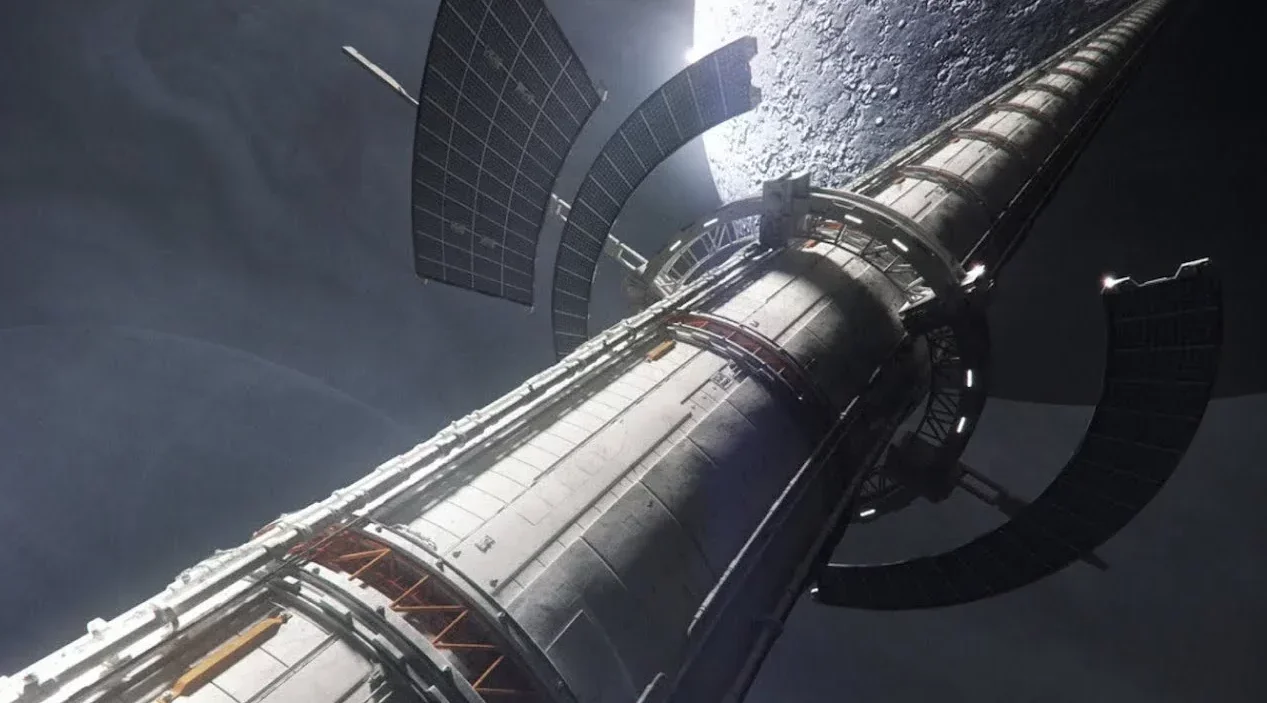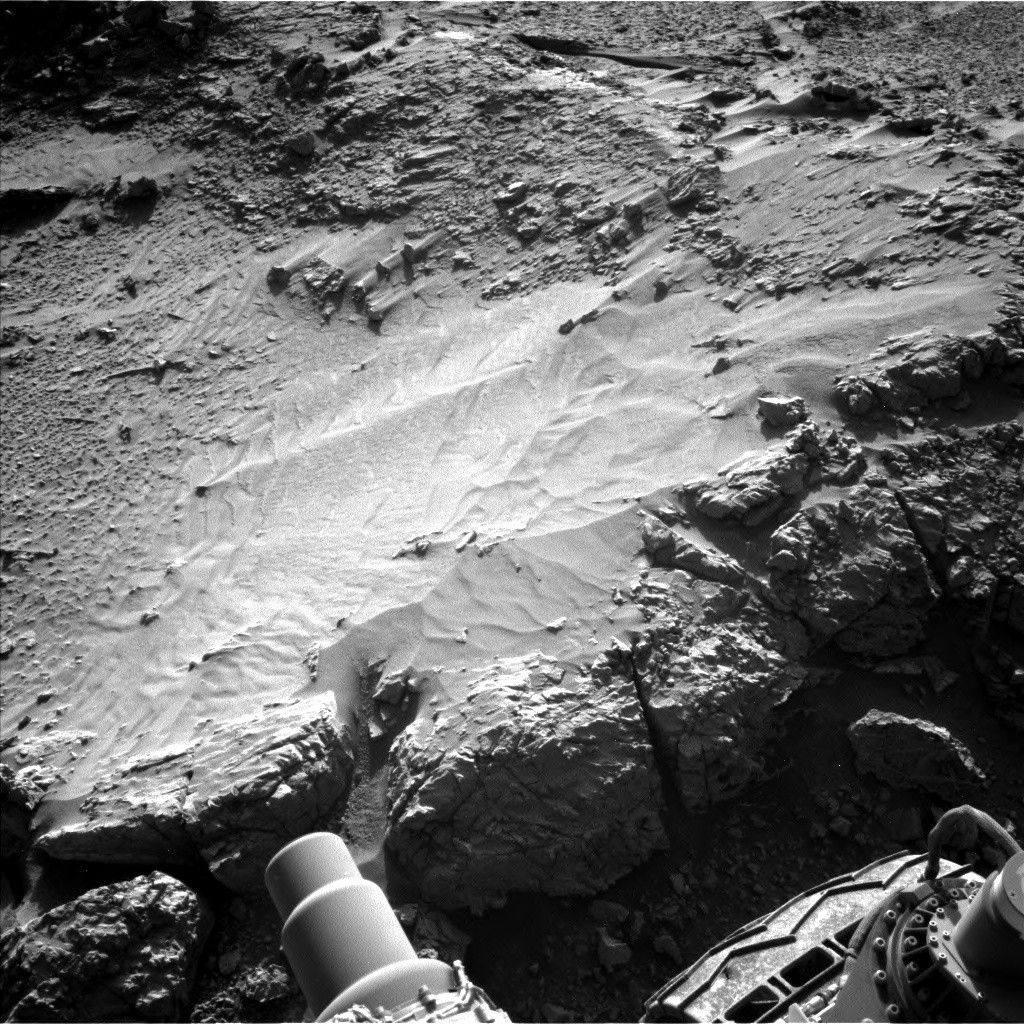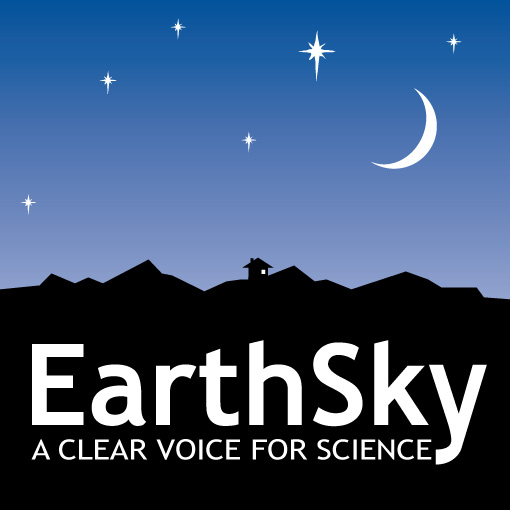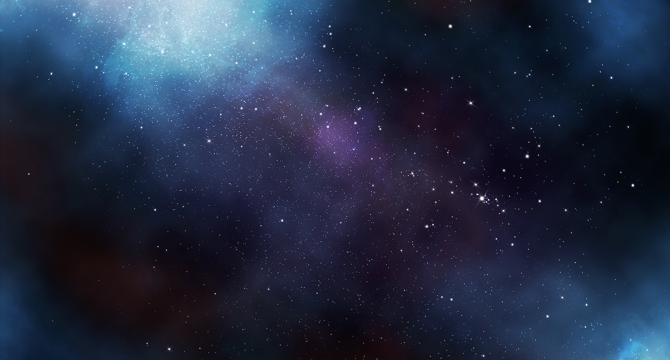Space News
Medium
140

Image Credit: Medium
How I Made Extra Cash with Coloring Pages
- Starting a side hustle with coloring pages is a lucrative opportunity highlighted by the Profitable Coloring Pages PLR Pack, offering over 750 designs for children with complete rights to rebrand and sell for profit.
- Users have quickly earned extra income by customizing and selling coloring books using the PLR Pack, leveraging platforms like Etsy and expecting earnings to grow significantly over time.
- The educational and creative themes in the designs have received positive feedback from parents for enriching children's learning experiences and embedding moral lessons.
- With increasing demand for interactive educational products, the Profitable Coloring Pages PLR Pack presents a low-risk, high-reward opportunity with a money-back guarantee and unlimited potential for creativity and earning potential.
Read Full Article
8 Likes
Brighter Side of News
285

Image Credit: Brighter Side of News
A space elevator to the Moon is now within reach thanks to modern technology
- Researchers have proposed a lunar space elevator concept called the 'spaceline' that could drastically reduce the cost of space travel.
- Traditional rocket launches are costly due to the need for propellant, while a space elevator would utilize a cable extending from Earth to the Moon for fuel-free transport.
- Past limitations of material strength for a space elevator may be overcome by attaching the cable to the Moon rather than Earth, reducing tension forces.
- The spaceline concept utilizes the Lagrange point, where gravity from Earth and the Moon cancels out, making it feasible with current high-strength materials.
- The estimated cost of constructing the lunar space elevator would be comparable to other large-scale missions, offering a more cost-effective means for lunar exploration.
- The spaceline would open up opportunities for safe access to the Lagrange point, ideal for scientific endeavors and technological developments.
- Potential projects at the Lagrange point include space-based telescopes, particle accelerators, gravitational wave detectors, and launch stations for deep-space missions.
- By reducing costs and complexities associated with space travel, the spaceline could accelerate the establishment of a permanent human presence in space.
- The concept of a lunar space elevator is not just a futuristic dream but a tangible solution grounded in current technology, offering vast possibilities for space exploration.
- The spaceline could pave the way for a new era in space travel, enabling endeavors from lunar bases to interplanetary missions and serving as a gateway to the next frontier.
Read Full Article
17 Likes
Mensjournal
110

SpaceX's Last Falcon 9 Launch Just Broke Its Own Weird Record
- SpaceX broke its own record by deploying the 1000th Starlink satellite during its 125th mission launch.
- Starlink is leading the satellite broadband race ahead of competitors like HughesNet, Viasat, and Project Kuiper.
- The future of broadband satellite internet service is promising but global accessibility is yet to be fully realized.
- The next SpaceX launches include Falcon 9 GPS 3 SV-08 in late May and Falcon 9 Axiom Mission 4 on June 8, 2025.
Read Full Article
6 Likes
Nasa
166

Image Credit: Nasa
Sols 4541–4542: Boxwork Structure, or Just “Box-Like” Structure?
- Curiosity rover on Mars encountered a potential boxwork structure, consisting of web-like ridges, on Sol 4541–4542 of its mission.
- Due to a front wheel being perched on a small pebble, the rover couldn't safely reach the structure but will conduct remote sensing observations and reposition for further investigation on Friday.
- Curiosity's tasks included taking Mastcam mosaics, imaging nearby terrains and ridges, conducting maintenance on the Heat Rejection System pump, and performing atmospheric science studies.
- Additional activities involved bumping back the rover, conducting atmospheric surveys including a dust-devil survey, and targeting ChemCam with AEGIS for autonomous analysis.
Read Full Article
10 Likes
Discover more
Nasa
268

Image Credit: Nasa
NASA’s Perseverance Mars Rover to Take Bite Out of ‘Krokodillen’
- NASA's Perseverance Mars rover is exploring a new region on Mars called 'Krokodillen' that may contain some of the oldest rocks on the planet.
- The area of interest is located on the lower slope of Jezero Crater's rim and offers clues about Mars' ancient environment and habitability.
- The presence of clays in the ancient bedrock of Krokodillen suggests the past existence of liquid water on Mars, crucial for the formation of clay minerals.
- The Krokodillen rocks date back to Mars' earliest geologic period, the Noachian, and are among the oldest rocks on the planet.
- Data from Mars orbiters hint at olivine and carbonate-rich areas on the outer edges of Krokodillen, which are known for preserving fossilized ancient microbial life.
- Perseverance's new sampling strategy involves leaving some rock core samples unsealed for future potential discoveries of scientifically compelling geologic features.
- The rover has collected and sealed numerous rock cores and regolith samples, with the latest unsealed sample named 'Bell Island' containing spherules.
- The new sampling strategy provides flexibility for collecting diverse rock samples as the mission continues its exploration of Mars.
- The environmental cleanliness standards inside the rover ensure minimal risk of sample contamination while leaving some tubes unsealed for future use.
- The mission's focus on exploring Mars for over four years aims to gather unique and compelling rock samples to study the Red Planet's geologic history.
Read Full Article
16 Likes
Nasa
387

Image Credit: Nasa
Space Biology Kicks Off Workweek as Crew Packs Dragon
- NASA astronaut Jonny Kim and Anne McClain studied space biology to counteract the effects of weightlessness on the human body.
- Expedition 73 crew packed the SpaceX Dragon cargo spacecraft for departure and practiced using the European robotic arm.
- Biomedical hardware testing included a thigh cuff to prevent space-caused fluid shifts and sensors measuring exhalation rates to understand respiratory system effects.
- Activities also involved investigating plasma physics, loading cargo into Dragon for undocking, training on the European robotic arm, and processing protein crystal samples for deep space missions.
Read Full Article
23 Likes
Popsci
383

Image Credit: Popsci
The first US solar storm emergency drill did not go well
- The federal government conducted a multiday emergency drill to assess preparedness for a massive solar storm, but the results highlighted the need for improvement in coordinating interoffice responses and educating the public.
- Government agencies organized the first Space Weather Tabletop Exercise focusing on various scenarios associated with solar events, revealing challenges in coordinating responses to geomagnetic storms among state and national agencies.
- Participants in the exercise identified the lack of continuity plans for solar storms and emphasized the importance of educating government staff and the public about space weather risks and impacts.
- Recommendations from the drill included investing in advanced space weather satellite systems, enhancing interagency communications, and developing an early warning system despite the short lead time for predicting the impact of solar storms.
Read Full Article
23 Likes
Knowridge
226

Image Credit: Knowridge
Could ghost galaxies hold the universe’s biggest secrets?
- Astronomers have discovered a mysterious population of 'hidden' galaxies that could challenge current theories about galaxy existence, formation, and evolution.
- Data from the Herschel Space Observatory revealed nearly 2,000 distant galaxies, previously invisible to regular telescopes, in the deepest image of the far-infrared sky.
- These hidden galaxies might be a significant source of the universe's energy in infrared light, potentially reshaping our understanding of galaxy formation and energy production.
- To confirm the existence of these galaxies, new telescopes like the proposed PRIMA, a next-generation far-infrared telescope, will be crucial in unveiling the universe's hidden secrets.
Read Full Article
13 Likes
TechCrunch
170

Image Credit: TechCrunch
Clock’s ticking: Save up to $900 on TechCrunch Disrupt 2025 tickets before prices rise
- TechCrunch Disrupt 2025 offers up to $900 off on individual passes or a 90% discount on Early Bird tickets for +1 until May 25, 11:59 p.m. PT.
- The event will take place from October 27-29 at Moscone West, San Francisco, featuring 250+ sessions, 200+ expert discussions, and the Startup Battlefield.
- Attendees can expect insights on next-gen products, visionary trends, and a focus on AI exploration.
- Noteworthy speakers include Alejandro Matamala Ortiz, Astro Teller, David George, Jai Das, Nirav Tolia, and others.
- TechCrunch Disrupt 2025 encompasses Industry Stages, AI-focused sessions, and features events like TechCrunch Sessions: AI.
- Special stages include Space Stage for space tech enthusiasts and Going Public Stage for insights on scaling and going public.
- The event offers interactive sessions, the Startup Battlefield competition, and chances for startups to exhibit.
- Startup Battlefield 200 pits 200+ startups against each other for a $100,000 equity-free prize.
- The Expo Hall showcases innovations, and Braindate-powered meetings facilitate networking opportunities.
- Don't miss the chance to save big on ticket prices before May 25 and join the tech and startup community at Disrupt 2025.
Read Full Article
10 Likes
Brighter Side of News
174

Image Credit: Brighter Side of News
Scientists discover remains of an ancient planet deep inside the Earth
- Seismic imaging reveals massive zones, LLVPs, in Earth's mantle beneath Africa and the Pacific, raising questions about Earth's inner makeup and history.
- Speculation suggests LLVPs could be remnants of a lost planet, Theia, from a collision that formed the Moon billions of years ago.
- LLVPs slow down seismic waves due to their unusual composition, challenging prior theories on their origin.
- Research indicates that Theia's mantle material merging with Earth may explain the density of LLVPs, suggesting Earth harbors remnants of another world.
- Advanced simulations by a multidisciplinary team propose that Theia's mantle fragments aggregated into the stable LLVP regions over billions of years.
- Discovery implies LLVPs' role in Earth's geodynamic history, potentially influencing processes like plate tectonics and the planet's magnetic field.
- Linking Moon formation to LLVPs bridges Earth's chaotic past with its current structure, revealing how cosmic collisions shape planets.
- LLVPs provide insights into Earth's ancient past and cosmic events, highlighting the interconnected nature of planetary processes.
- Understanding LLVPs' origins could elucidate broader planetary evolution processes and geodynamic history, offering new perspectives on Earth's transformation.
- Research marks a significant step in unraveling Earth's mysteries, emphasizing the impact of cosmic collisions in shaping planetary bodies.
Read Full Article
10 Likes
Earthsky
153

Image Credit: Earthsky
Flamingos create water vortices to trap their prey
- Flamingos use different techniques, such as stomping with webbed feet and chattering their beaks, to create water vortices and trap their prey.
- Scientists observed flamingos at the Nashville Zoo and created artificial copies of their beaks and legs to study in the lab.
- Flamingos actively hunt for moving prey like brine shrimp using vortices to concentrate and capture their food.
- They use techniques like skimming, where their flattened beak and S-shaped neck create sheet-like vortices to trap prey efficiently.
- Researchers suggest that understanding flamingos' feeding strategies could inspire more effective systems for concentrating particles like microplastics.
- Engineers could potentially design robots to navigate in water or mud using techniques inspired by flamingos' movements.
- Flamingos are specialized filter feeders, utilizing their unique body parts and behaviors to capture agile prey effectively.
- The study sheds light on how flamingos' adaptations can be applied to advancements in filtration systems and robotics.
- Flamingos' hunting techniques involve a combination of movements involving their legs, head, and beak to create eddies in the water where they catch their prey.
Read Full Article
9 Likes
Sciencenewsforstudents
110

Image Credit: Sciencenewsforstudents
Scientists Say: Interstellar medium
- The interstellar medium (ISM) refers to the gas, dust, and radiation filling the space between stars within a galaxy.
- Hydrogen and helium gas make up about 98 percent of the ISM's mass, with heavier elements like carbon and oxygen making up the other 2 percent.
- The gas molecules in interstellar space are extremely sparse, with an incredibly low density compared to Earth's atmosphere.
- Dust grains in the ISM are sparse but sufficient to block visible light from stars, allowing infrared light to pass through and be observed with telescopes like the James Webb Space Telescope.
Read Full Article
6 Likes
Knowridge
93

Image Credit: Knowridge
Signals of life? A new discovery sparks hope for life beyond Earth
- Astronomers have detected potential signs of biological activity on exoplanet K2-18b using the James Webb Space Telescope.
- Chemical fingerprints of dimethyl sulfide (DMS) and dimethyl disulfide (DMDS) were found in the planet's atmosphere, suggesting the presence of life-based molecules.
- The discovery has reached a 'three-sigma' level of statistical significance, hinting at potential biological activity beyond our solar system.
- Scientists remain cautious about jumping to conclusions and plan further observations to confirm the presence of life on K2-18b.
Read Full Article
5 Likes
Medium
294

Image Credit: Medium
From Morality to Moral AI: A Galactic Observer’s Strategic Report on Earth’s Justice Evolution
- Zyx-4, a First Observer from Andromeda, presents a strategic report on Earth's justice evolution regarding Homo sapiens.
- The report spans key phases: from primal survival-based justice to the emergence of algorithmic courts and human moral systems.
- Early Homo sapiens developed proto-morality driven by a need for cooperation and rule enforcement to ensure survival.
- The report explores how morality evolved from divine laws to ethical awakening, secular movements, and the advent of AI-driven justice.
- Ethical thinkers like Buddha and Socrates questioned existing laws, highlighting the dichotomy between order and oppression.
- Human societies went through phases of religious moral control to secular ideals, aiming for natural rights and democracy.
- The rise of algorithmic justice poses challenges, including biases in AI systems and the potential for data-driven moral shaping.
- Zyx-4 recommends analyzing Earth's moral subtleties, infiltrating narratives, and exploring human-AI symbiosis for moral experimentation.
- Despite human flaws, Zyx-4 acknowledges their paradoxical nature and recommends symbiosis over subjugation for mutual learning.
- In conclusion, Zyx-4's report sheds light on Earth's moral evolution and suggests a collaborative approach to harnessing human potential.
Read Full Article
17 Likes
Guardian
43
Image Credit: Guardian
Starwatch: Boötes, the herdsman ploughing the heavens
- Boötes, the herdsman, is a prominent constellation in the northern hemisphere's spring night sky and is one of the International Astronomical Union's 88 official constellations.
- Despite being known as the herdsman, some stories associate Boötes with a ploughman driving the constellation of Ursa Major, the great bear, around the pole.
- Boötes is often depicted as associated with the constellation of Canes Venatici, the hunting dogs, on old star maps where he is shown holding these dogs on a leash.
- The brightest star in Boötes is the red giant star Arcturus, the fourth brightest star in the night sky, emitting around 170 times more light than our Sun, visible in the southern hemisphere near the northern horizon.
Read Full Article
2 Likes
For uninterrupted reading, download the app